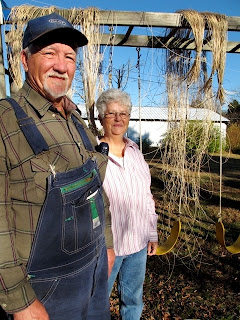Meet James Miller.
James is the current Graduate Assistant in charge of directing the restoration of the Gardner House and student engagement, succeeding Tonya Taylor (WKU '08). He has been working in the construction trades since high school. Even when he had other jobs, he usually still had a side job repairing or building something. He worked on his first restoration project in 2002 and is currently restoring his own historic house, a 1915 foursquare home in Bowling Green.
When he came to Western Kentucky University to the Folk Studies program, he applied for a graduate assistantship. Given his experience in construction and his interest in preservation, directing the Gardner House restoration was a great fit. But it wasn't always easy, despite his background.
"A lot of the work had to be done in such a way I wasn't used to because I couldn't just be there every day. Normally I work a project 5 days a week until it's done," says James. "I also had to modify the tasks for the students a bit and have a variety of things available to do to fit skill levels. That was a learning experience."
In fact, training students to do the different tasks was one of the more difficult challenges of his assistantship. "I did have to do a lot of training, some groups more than others. There was a time or two when a group just had a hard time with what I had planned. I only really had a few people with construction experience and even less with restoration experience. Those are somewhat different skill sets." Also, some jobs were more popular than others, he says. "Most people enjoyed the tuck pointing, but no one really liked sanding or scraping. People liked going to the river to get sand until it was time to haul it back up."
There were other challenges as well. The house is approaching 200 years old; trying to repair it with accurate materials sometimes proved tricky. "For example, the plaster is a bit older than plaster I have worked with and required more working time and water to keep it from cracking," James explains.
In his two years directing restoration at the Gardner House, James and the students he oversees have accomplished a lot. "In my tenure I have put on a new wood shingle roof, repaired plaster, built new doors, tuck pointed, repaired brick work and repaired some framing issues," he says. And while there have been frustrations, there have also been many rewards: "I have enjoyed the ability to work with my hands and teach the students something new."
James will graduate this May with his M.A. and the direction of the restoration will be passed on to the next person in line.
If you're interested in the work James and other students in WKU's Folk Studies program have accomplished, we would love to have you come to our April open house! James will be available to answer questions. The event is free of charge, but because space is limited, reservations are required. Just email us at gardnerhousemuseum@gmail.com and let us know when you plan to be there.
Top photo: photographer unknown. Other photos by Amanda Hardeman.



















